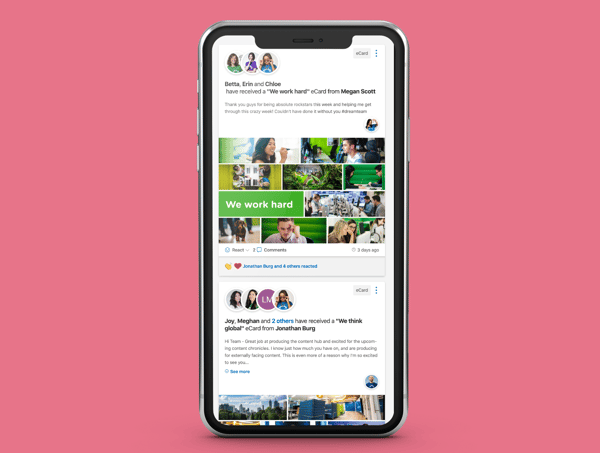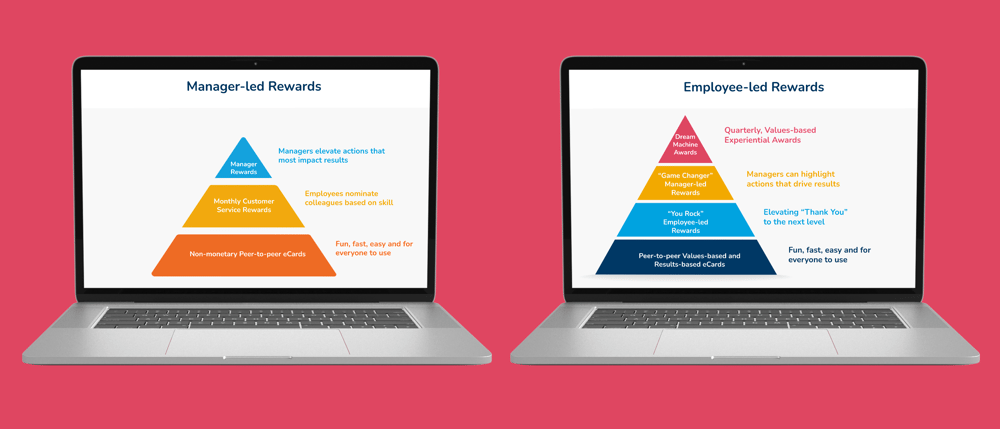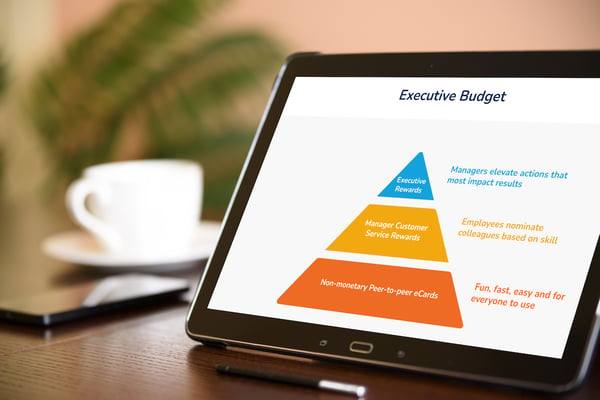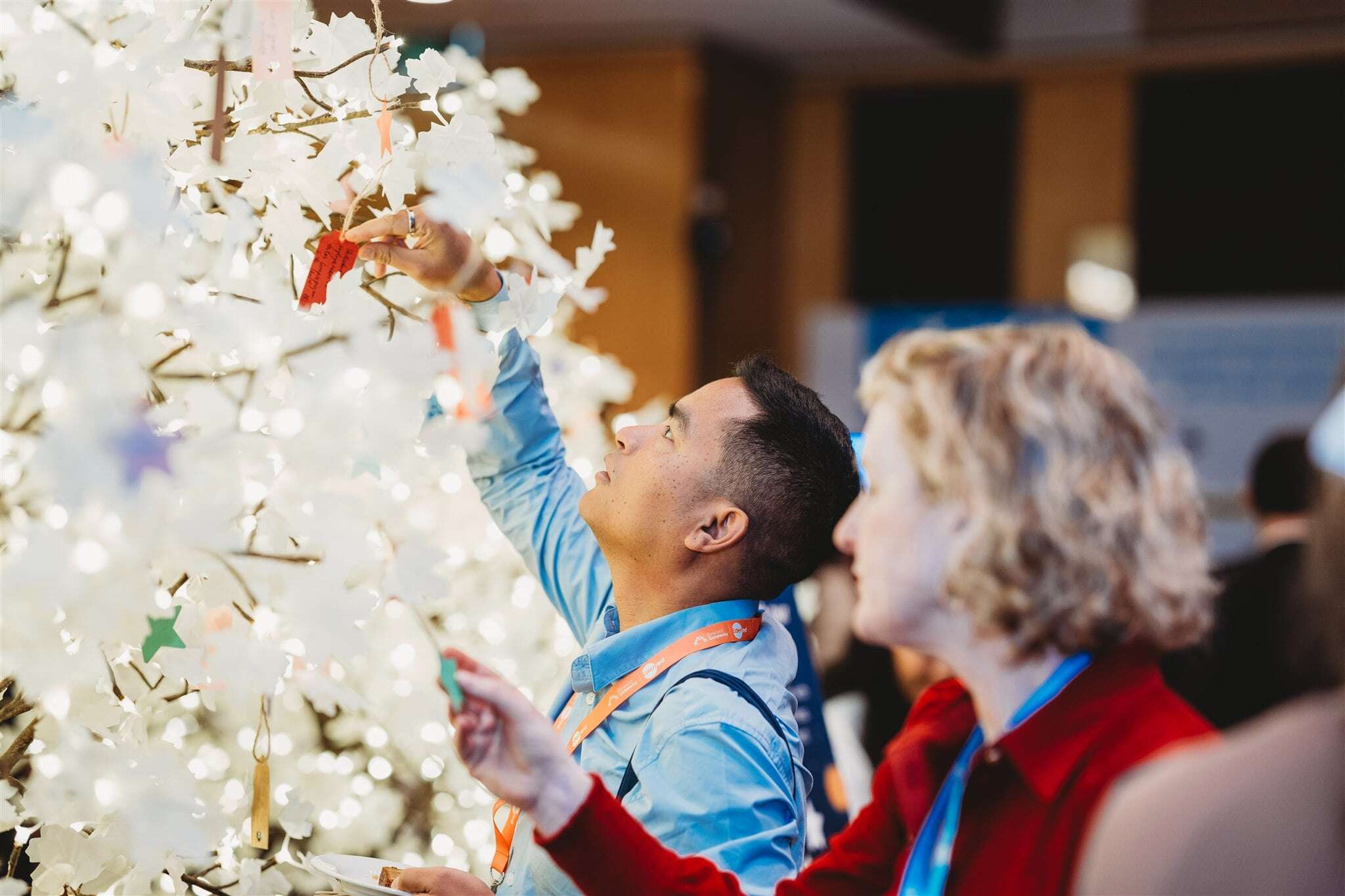It is March – and as autumn begins it's a good time to recharge and consider those we care about. And this month comes just in time. We have heard from many that COVID-19 fatigue has become a real challenge – personally and in our workforces.
 You may be feeling drained, stuck in a rut or even disengaged from your work or your team. Even more likely, you may have concerns that fatigue is impacting your teams at work. Take this upcoming month to fight back against fatigue and celebrate what IS working and those who help.
You may be feeling drained, stuck in a rut or even disengaged from your work or your team. Even more likely, you may have concerns that fatigue is impacting your teams at work. Take this upcoming month to fight back against fatigue and celebrate what IS working and those who help.
I worked with a group that used the acronym LOVE (Living Our Values Everyday) as a theme to encourage sharing stories of those that support others. Our team had a virtual chocolate tasting during February and I think chocolate is a brilliant way to fight back against fatigue, but these ideas – while clever – require work to establish and then they will fade away.
Creating a long-term strategy to show appreciation for your entire workforce starts with building in a series of scalable tactics that continually build a culture of appreciation within your workplace.
Let’s walk through six ways to scale your employee reward and recognition program to make a bigger impact on your people.
Making employee recognition scalable
Given that 71% of HR leaders shared that 2020 was the most stressful year of their careers (from Reward Gateway research), I want to focus on solutions that allow companies to do more with less. A fabulous way to spread the responsibility and benefits of consistent recognition across a larger group is to establish peer-to-peer recognition formally in the company. This makes it less likely that great work will go unnoticed. It also allows everyone to benefit from the fatigue-busting benefits of gratitude (Forbes).

If you don’t yet have a solid strategy for peer-to-peer recognition, make this the month that you do so. Make sure the recognition is easy to use, accessible from anywhere, visible to all, and tied to your values to make the biggest impact. Given the disconnected nature of our workforces there has never been a better time to shift to digital recognition.
Making employee rewards scalable
We have been hearing from company after company that they are looking at rewards as a way to boost their tired workforces to ensure that well-intentioned appreciation is really felt. These instincts are right on. In our research we found that 76% of people strongly agree that getting a reward from their manager is a strong motivator. But implementing rewards can be intimidating. No one wants to put a budget towards a plan that doesn’t drive engagement.
Starting small
Let’s say you don’t yet have a solid budget to work with. Here are some ways that our clients have made the most of a starter rewards plan:
- Senior Leadership Budgets: How about giving your highest-level leadership team a budget? Then the leaders on their team can advocate for those on the front lines whose work stands out. They can elevate that great work and make it visible to those with budget.
- Periodic Merit-based Awards: You can spread that budget out over quarters or months and nominate employees for a monthly Teamwork Award or a quarterly Customer Excellence award. This allows you to strictly manage your budget and make the appreciation and rewards highly visible to the workforce.
- Periodic Usage-based Awards: Some clients prefer to focus awards on participation. This means you don’t benefit from increasing the visibility of the 'best' stories, but it also means less effort to make a decision. In this case anyone who participates in your recognition program is entered in a raffle for a reward. Many folks jump right to rewarding those that were recognised, but don’t forget to reward those that submit recognition. Acknowledging those who notice and tell the stories of great work is an even better way to ensure great work gets shared.
Pushing rewards out
While keeping rewards small does help your costs, it also tends to centralise the work required in administering rewards. To really do more with less, I love it when companies put rewards in the hands of a larger group of people.
- Manager-led rewards: Frontline managers are more likely to see great work as it happens and make rewards more immediate. Reward budgets also give managers more direct control of their culture and a more powerful role in supporting it.
- Employee-led rewards: 73% of people strongly agree that the ability to provide a reward to a colleague would be strongly motivating, according to our survey. Here at Reward Gateway, each employee has a certain number of rewards we can give to colleagues and we’ve found 40% of these rewards go to those in a different department. Empowering employees to give rewards means that those actions that managers don’t see – the day-to-day heroism – won’t get missed.

A great reward redemption experience
If you are going to make rewards scalable, it is also crucial that the process of redeeming rewards doesn’t require loads of administrative time or lessen the impact of the reward.
In 2020, we asked people what the optimal redemption experience would entail and we found that choice in reward, transparency in costs, personalisation of reward choices, and immediacy are the four most important aspects to consider.
Don’t let a well-designed reward plan fall short when it comes time to get the prize! Take a look at Reward Gateway’s new Reward Marketplace to learn how we tie eGift Cards, Amazon’s expansive catalog and charitable donations together to create a simple, fast and fun way to get rewards worthy of your efforts.
.jpg?width=600&name=01%20Slalom-Marketplace_AU%20(1).jpg)
I hope you have a relaxing and rewarding month and that you celebrate those around you who love and support you and that you in turn get celebrated. I also hope your efforts lead to a culture of appreciation that provides dividends well into the future.
If you're looking for ways to scale your own reward and recognition programs, Reward Gateway's suite of R&R tools can help. Reach out to a member of our team to learn more.
%20(1).jpeg) Alexandra Powell
Alexandra Powell






